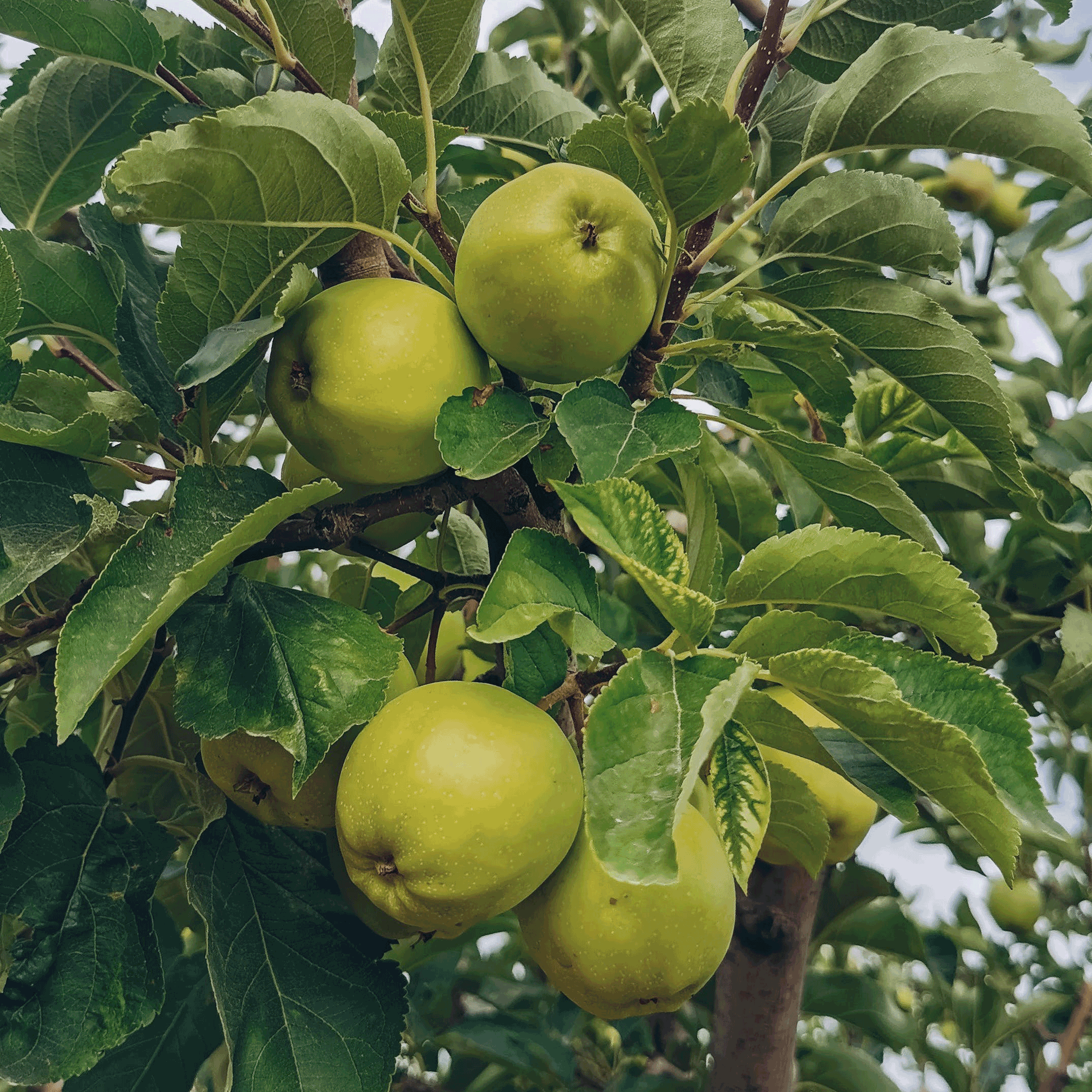
Plants 101
Apple Trees 101: Care

Have you ever dreamed of picking fresh fruit right from your own garden? Apple trees make a wonderful addition, providing stunning blossoms in the spring and a bountiful harvest of tasty fruit in the fall. Whether you're an experienced gardener or just starting out, growing and caring for apple trees can be a rewarding journey once you learn the fundamentals. There’s a lot to consider, from selecting the right variety for your climate to mastering the proper care for your trees—but don’t worry, we’re here to help you every step of the way!
Choosing the Right Apple Tree
When trying to pick the perfect apple tree for your space, it's important to select the right variety for your climate. Apple trees come in various cultivars, each offering its own unique characteristics, such as distinct flavors, size, or resistance to diseases. Some varieties are more suited for colder climates, while others thrive in warmer regions. Be sure to choose a variety that will do well in your area to keep it happy and thriving for years to come.
Additionally, consider whether you want a dwarf, semi-dwarf, or standard-sized tree. Dwarf apple trees are perfect for small gardens or containers because they are easier to manage, while standard trees yield more fruit but require more space. Be sure to consider the mature height and width of your tree to set realistic expectations for how much space it will need as it grows. With so many varieties available though, you're sure to find the perfect apple tree for your garden!
Planting Your Apple Tree
Sunlight
Choose open areas with plenty of sunlight, avoiding locations where nearby trees or structures may cast shade. Apple trees need at least 6 hours of direct sunlight daily to grow efficiently and produce fruit. Trees grown in shaded areas may produce fewer apples and experience weaker overall growth. If you're growing apple trees indoors, place them in a south-facing window or use grow lights to ensure they get enough light.
Soil and Planting
Apple trees prefer well-draining, slightly acidic soil. Avoid planting in heavy clay or overly compacted soil, as these can lead to poor drainage and root rot. If your soil is too alkaline or clay-heavy, consider amending it with compost or organic matter to improve drainage and texture. After planting, mulch around the base of the tree to help retain moisture and keep weeds at bay.
When planting apple trees, make sure they are spaced at least 12-15 feet apart for sufficient air flow and growth. Dwarf varieties require less space, typically 6-8 feet apart, while standard trees may need 20 feet or more. Proper spacing helps reduce competition for nutrients and sunlight, promoting healthier trees and better fruit production. Not sure how to plant a tree? Follow our tips here!

Watering and Fertilizing
Balancing a good watering schedule will be crucial, especially during the first few years after planting. It'll be ideal to water young trees deeply once a week during dry spells, ensuring the water reaches the roots. Once your apple tree matures, you can reduce the watering frequency. However, during periods of drought or extreme heat, you may still need to water the tree every 10–14 days.
For fertilizing, apply a balanced, slow-release fertilizer in early spring, right before new growth starts. You can use an all-balanced fertilizer or one specially designed for fruit trees. Avoid fertilizing in late summer or early fall to help the tree enter dormancy. This also ensures that any new growth has time to harden off before the first frost!
FAQs
How many varieties are there?
There are over 7,500 different types of apples grown worldwide, each with its unique flavor, texture, and use!
How do I know which apple tree is right for me and my space?
Start by evaluating your climate, then consider the mature size of the tree to ensure it will fit in your space without outgrowing it. Next, think about the type of fruit you want and choose a variety that suits your needs. For example, Honeycrisp apples are perfect for eating fresh or making cider, while Gala apples are ideal for apple pies or pastries!
Conclusion
By selecting the right variety and planting properly, your apple trees will not only thrive but also become a beautiful and fruitful part of your garden!

Words By The Sill
Empowering all people to be plant people—a collection of articles from The Sill's team of plant experts across a variety of plant care topics to inspire confidence in the next generation of plant parents. Welcome to Plant Parenthood™.
Do Some Plant Shopping